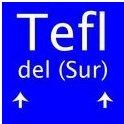Teachers are at greater risk of experiencing vocal problems and are more likely to consult doctors on voice disorders than most other occupational groups¹ and so unless you’re teaching the Silent Way, it’s highly likely you spend a fair amount of time in the classroom talking.
On pre-service teacher training courses, TT (teacher talk) is often covered in a session on Classroom Management early on the course although some trainers are concerned that this may be too early on and comes at a point when trainees are being overwhelmed with information. Should there be a separate input session on TT at another point in the course, or may it depend on trainees’ needs?
TT is frequently modelled during input sessions, though it’s important to reflect carefully on how it is used if you are providing a bad model – in case trainees get the wrong idea and end up copying you! Good TT is modelled in the Unknown Language component, yet TT is often still a point which is raised in teaching practice feedback throughout the course.
How can we define good and bad TT?
Examples of good or essential TT include:
- giving and checking instructions
- concept checking
- drilling
- rapport-building through input +1
- leading feedback
- error correction
- eliciting
- modelling language
- clarifying language
Some examples of poor TT include:
- echoing
- commentary
- wittering
- unnatural TT (e.g. not using contractions)
- ineffectively grading language
How can we make TT more effective?
Clarify whether TT is good or bad: as tutors, we sometimes give inexplicit feedback on poor TT and fail to highlight positive TT. We should be more concise when dealing with poor TT so that trainees have a clear focus for improvement, but also praise quality TT.
There was a suggestion to create an observation task which analyses the purpose and effectiveness of TT – this could perhaps involve transcription, especially if the class was recorded.
Train trainees to give effective instructions to avoid lengthy, repetitive or overly polite phrasing.
Another suggestion is for trainees to make TT more explicit in their lesson plans – wittering is an example of bad TT which can often occur during feedback stages when trainees haven’t clarified their role in the stage. Also, by making feedback stages more learner-centred, we can limit TT – by encouraging learners to lead and extend feedback, repeat answers, clarify language, etc.
Further reading:
Jamie Keddie’s IATEFL talk on how to develop TT (and thanks to Fiona for summarising his suggestions on her blog)
Emma Meade Flynn also presented on the topic of teacher talk and interaction at IATEFL and her follow-up blogpost can be found at TD Lab
And a third IATEFL presentation from Monica Poulter on Teacher talk as a pedagogical tool
Barbara Skinner’s ELT Journal article, Effective teacher talk: a threshold concept in TESOL and another from Richard Cullen, Teacher talk and the classroom context
Sam Shepherd on why “reduce TTT” provides trainees with insufficient feedback
The unhealthy noise in our profession from David Pickup
ESL Teacher Talk for Effective Classroom Interactions – an independent study course
ResearchGate has a number of articles on teacher talk
Investigating Classroom Discourse, Walsh (Routledge, 2006) – the image below comes from this text

Plus, here’s a link to the #CELTAchat storify in case I missed anything!
Huge thanks to everyone who participated, especially Sarah and Matthew for sharing so many of the links above and Fiona for moderating 🙂







